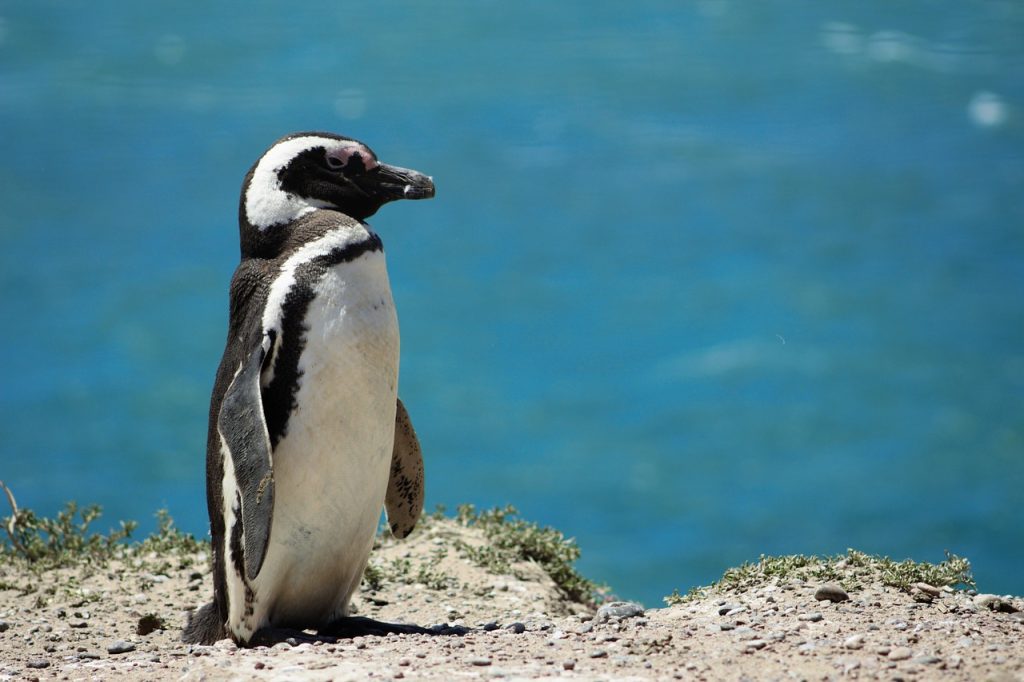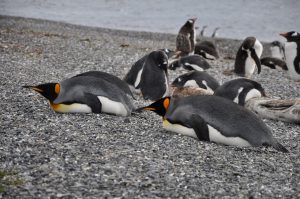
MINT HILL, NC – On September 22, a group of ten students from Independence High School embarked on a two-week trip to Argentina. The group travelled to Trelew, the largest and most populous city in the Chubut River Valley located in the otherwise sparsely populated Patagonia region at the southern tip of South America.
This is the third year a group from Independence has participated in a cultural exchange with students from the Escuela Nueva, a small private school in Trelew. The students from Independence live with families in Trelew and attend school at the Escuela Nueva for two weeks. In the spring, students from Argentina visit Mint Hill and live with the students they hosted in October.
“Even though they don’t learn to speak Spanish fluently, they are immersed in it for two full weeks, and they learn so much more than they’d ever learn sitting in a classroom,” says Spanish teacher and trip organizer Melanie White. “They get to walk through a plaza that they see in the textbook, and they actually get to see what they read about in the classroom. Their whole view of the world has been opened up.”
It was this idea that students could experience the things they read about in textbooks that first motivated White to suggest an exchange trip four years ago. Knowing Independence had a well-established exchange program with a school in England, White approached the principal about the possibility of doing something similar in Argentina where she herself grew up with missionary parents. White also began reaching out to connections there, which ultimately led her to the principal of the Escuela Nueva, who was just as enthusiastic as White about the potential for a cultural exchange. “We both literally had the same idea around the same time and just happened to make the perfect connection,” says White.

When I asked the students who travelled to Argentina what their favorite part of the trip was, their response was immediate and universal: penguins. “We go to the largest penguin station on any continent,” says White, who feels it’s beneficial for her American students to see Argentinian wildlife in their south-of-the-equator spring. “That’s one reason that we go in October.”
“They were loud. There were so many of them!” said Katie. “My dad, before I left, he was like, ‘You’re going to see penguins, and you’re not going to be at the zoo.’” Katie and her fellow travelers remember the moment when they first saw the million penguins that come to Tombo to nest. “It just kind of struck me: ‘I’m not at the zoo!’” Katie says.
The students have the opportunity to see other attractions like the Museum of Paleontology Egidio Feruglio, which houses the largest dinosaur bone found to date, and the hotel where Butch Cassidy and the Sundance Kid hid out when they were on the run. But the majority of their time is spent simply living everyday life in Trelew. “They like to hang out with the other teenagers,” says White. “They get together at each others’ houses and have the Argentine asado, which is the typical Argentine barbecue.”
Food proved to be both a highlight and a challenge of the trip. In addition to the lamb roasted on an open fire typical of southern Argentina, the teenagers enjoyed delicious wood-grilled meats with nearly every meal with their host families, who were eager to have them try every typical Argentinian food. If it wasn’t dinner, it was sweet, say the students, who were surprised to see pastries for every snack. “How late they ate dinner was a struggle for me,” said Nathan, noting that it’s typical for Argentinians to sit down for a family anywhere between 9:00 pm and 12:00 am.
The American teens were also struck by how relaxed the Argentinian teens’ school days were, though this may have been due in large part to the small size of the Escuela Nueva, which has only 250 students in grades kindergarten through twelve. Independence, by contrast, has more than 3000 students in grades nine through twelve! “It’s a much more comfortable environment because of how small their class sizes are,” says Nicole. “They don’t switch classes; the teachers switch.”
Something else that took the American students by surprise was, as White put it, the Argentinians “touchy feely” nature. “When you greet each other, you kiss each other hello on the cheek,” said Andrea. “They’re just so used to that. Personal space is not as much of a big deal to them.”
The impact of the exchange extends far beyond improving students’ Spanish language skills and cultural awareness. Several students who participated in the exchange have gone on to minor in Spanish in college; one even chose to change her major to International Business because of it. “We’ve had a couple of students that have graduated who hope to go back this next summer and do an internship with a family down there that owns a wool factory,” says White.
But perhaps the true value of the exchange is the relationships forged between Argentinian and American families. “I knew I was going to be attached because I love them all so much, but leaving them in the airport was the hardest thing I’d ever had to do,” says Gray, who remembers having to be nearly dragged to the flight home by his teacher. The students who travelled to Argentina in October hope to host their Argentine brothers and sisters in their homes this spring. They’re looking forward to sharing things like Carowinds, American food, and of course, Independence High School, with them. “They’ll be amazed at how big it is!” says Katie.
For other American high schoolers considering an exchange program, these students’ advice is clear and simple: Absolutely. Do it. “Someone asked me the other day, ‘What’s the best part of traveling abroad?’” says Gray. “Just getting to experience someone else’s culture and understand how different their life is from yours but also the parallels between the two. It’s very powerful. It’s actually beneficial because you are more appreciative of what you have and you also get to see how other people live.”
